The right outfit can make or break a mission trip experience in ways most first-time volunteers never anticipate.
When you’re sweating through inappropriately heavy jeans in 95-degree heat or realizing your shorts are too short for the conservative community you’re serving, the focus shifts from meaningful service to personal discomfort.
Mission trip veterans know that thoughtful packing isn’t just about looking good – it’s about respecting cultural norms, staying comfortable in challenging conditions, and maximizing your ability to serve effectively.
The wrong clothing choices can become frustrating distractions that limit your impact, while the right ones fade into the background, allowing you to be fully present in your work.
If you’re heading to tropical communities, urban centers, or remote villages, these outfit inspirations will ensure you’re prepared for every situation you might encounter while serving others.
Let’s look at these top outfits!
Lightweight, Modest Layers for Versatility
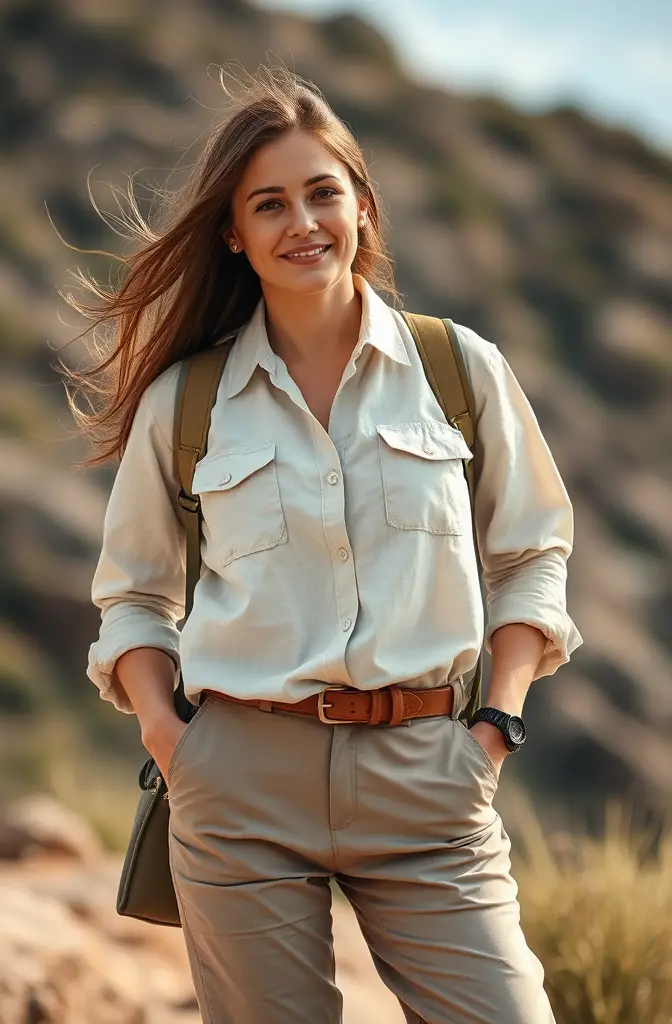
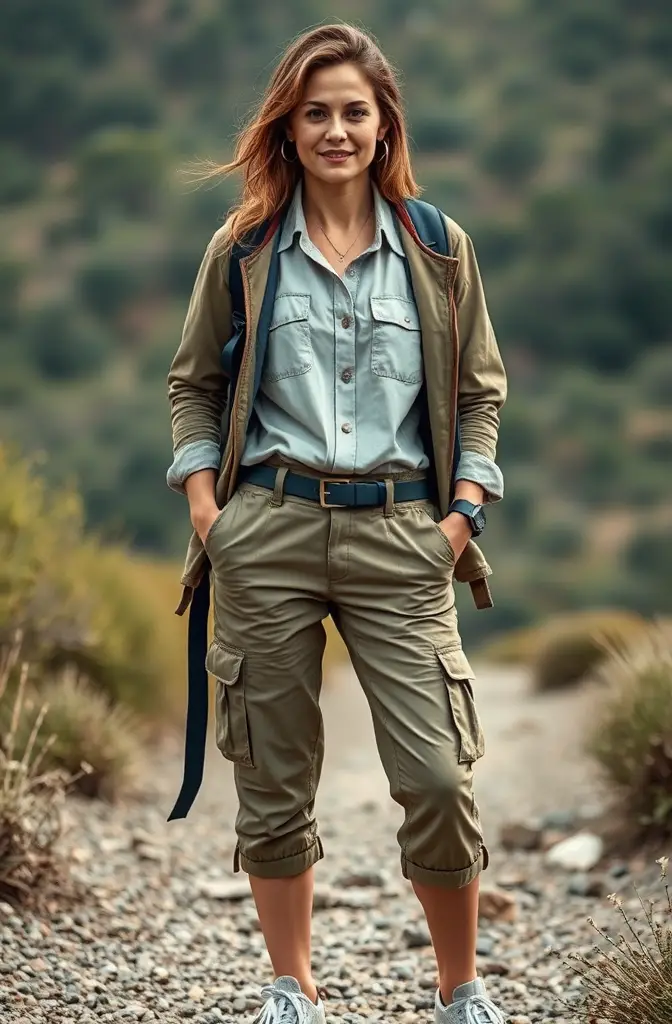
Lightweight layers are absolutely essential for any mission trip, regardless of your destination.
You’ll face unpredictable weather, varying cultural expectations, and different daily activities that all demand clothing flexibility.
Think thin cotton or linen button-downs that can be worn open over a t-shirt or tank when it’s hot, then buttoned up for more coverage when visiting religious sites or meeting with community leaders.
Convertible pants that zip off into shorts give you options without taking up precious suitcase space.
Investing in moisture-wicking fabrics will keep you comfortable during physical work while also drying quickly when hand-washed in limited facilities.
A light cardigan or breathable long-sleeve shirt can protect against unexpected evening chills or provide sun protection during long outdoor projects.
Neutral colors are your best friend since they show less dirt and can be mixed and matched endlessly.
Women should pack at least two lightweight scarves that can transform an outfit instantly for more conservative settings or serve as an impromptu head covering if needed..
Layering thin items rather than packing bulky clothes means you can adjust to temperature changes throughout the day without carrying extra gear.
The golden rule is to prioritize items that serve multiple purposes and can be worn in different combinations.
Remember that loose-fitting clothes will keep you cooler in hot climates while still providing appropriate coverage.
Choose natural fabrics where possible, as they breathe better and tend to handle repeated washing better than some synthetics.
Footwear That Goes the Distance
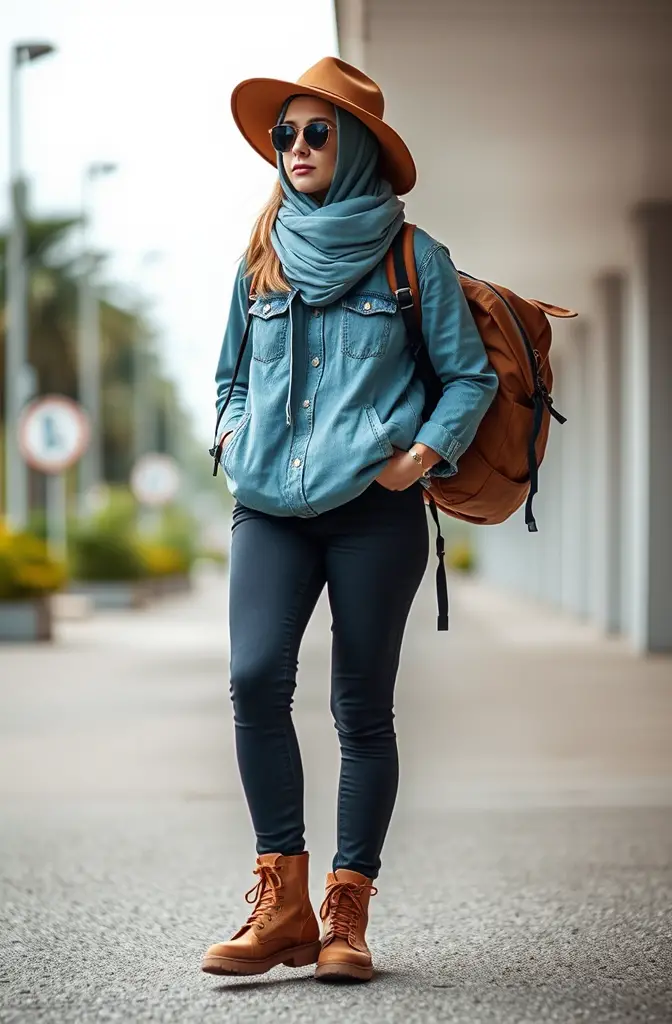
Your feet will carry you through every moment of service, making proper footwear possibly the most critical element of your mission trip wardrobe.
One pair of broken-in, supportive walking shoes can make the difference between being fully present in your work and being distracted by painful blisters.
Athletic shoes with good tread are versatile enough for construction projects, community outreach, and exploring local areas during free time.
Always break in new shoes at least two weeks before your trip to avoid painful surprises when you’re far from home.
Pack a pair of lightweight sandals with back straps (not flip-flops) for showering in shared facilities and giving your feet a break during downtime.
Closed-toe options are essential for construction sites, medical missions, and areas where foot protection is necessary for safety.
Consider water-resistant shoes if you’re traveling during rainy season or to areas with unpredictable weather patterns.
Remember that you’ll likely be walking significantly more than you do at home, often on uneven terrain or unpaved roads.
Comfort should take absolute priority over style – this is not the time to prioritize cute over functional.
Pack at least three pairs of quality moisture-wicking socks for each pair of closed shoes you bring.
If your mission involves medical work or food service, check if there are specific footwear requirements before packing.
Bring small blister bandages and moleskin as preventative measures, as foot care becomes crucial when you’re on your feet all day.
Consider the cultural context – in some regions, removing shoes before entering homes is expected, so slip-on options can be convenient.
Culturally Respectful Attire That Opens Doors
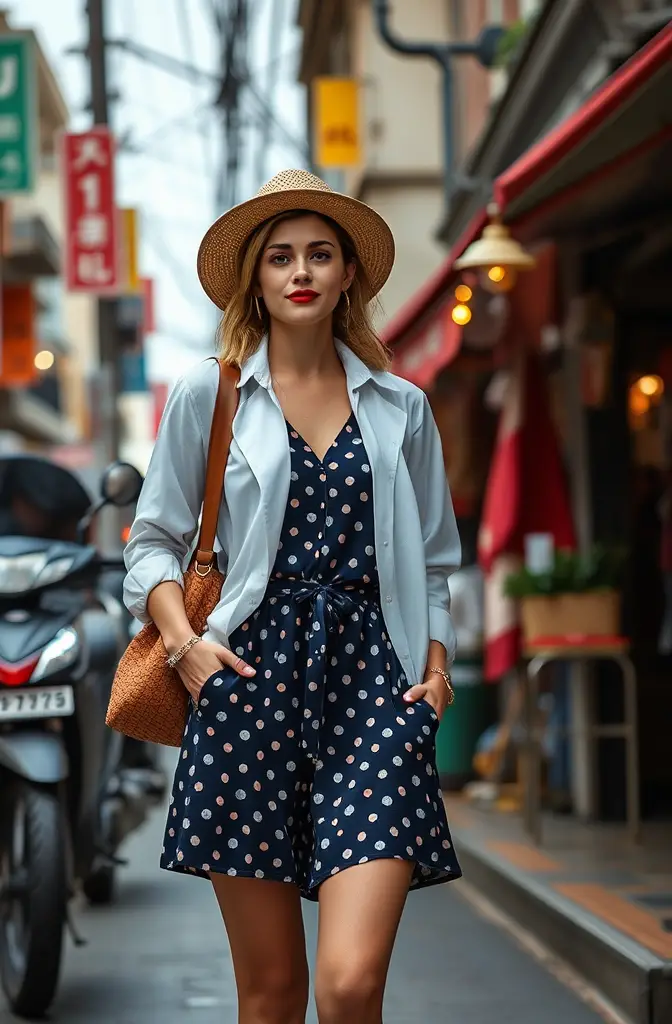

Understanding and respecting local dress codes isn’t just polite – it directly impacts your effectiveness as a volunteer and how warmly you’re welcomed.
Research cultural expectations thoroughly before your trip, as standards vary dramatically from conservative religious communities to more relaxed urban environments.
In many countries, showing shoulders, knees, or cleavage is considered inappropriate, especially for women, even if you observe locals dressing differently.
Remember that as a visitor, you may be held to different standards than locals, and dressing modestly shows respect for the community you’re serving.
For women, a midi or maxi skirt can be invaluable for visiting religious sites or communities where pants on women might raise eyebrows.
Pack at least one “dressy casual” outfit suitable for worship services, as many mission trips include attending local religious gatherings.
Avoid clothing with potentially offensive slogans, political statements, or excessive branding that might create unnecessary barriers.
Consider bringing a few locally appropriate accessories that help you blend in rather than stand out as obviously foreign.
In some cultures, bright colors are the norm, while in others, more subdued tones are appropriate – research this before packing.
Watching how local community leaders dress can provide excellent guidance on appropriate attire.
Remember that showing respect through your clothing choices opens doors for deeper connections and more meaningful service.
Be prepared to adapt your wardrobe if you receive gentle feedback from local partners about your attire.
Work-Ready Clothes That Can Take a Beating
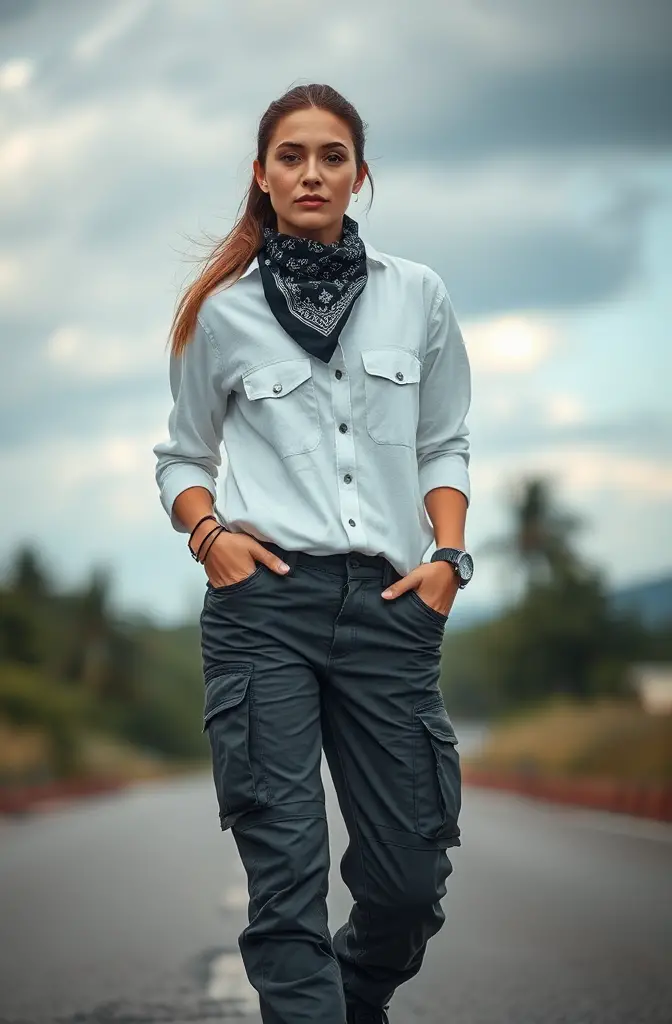

Mission trips often involve physical labor that will test the limits of your wardrobe, from construction projects to gardening to cleaning.
Pack clothes you don’t mind ruining completely – this is not the time for your favorite t-shirts or brand-new pants.
Durable fabrics like canvas, thick cotton, or work-specific synthetics will withstand rough conditions better than thin or delicate materials.
Dark colors hide dirt and stains better, making them practical choices for work days.
Consider bringing designated “work clothes” that you’re willing to discard at the end of your trip, freeing up suitcase space for any souvenirs.
Cargo pants or shorts with multiple pockets keep essential items accessible when you’re on a worksite without a bag.
A bandana or buff can serve multiple purposes – from sweat absorption to dust protection to emergency hair tie.
Long sleeves, despite the heat, can protect against sun, scratches, and insects during outdoor labor.
Pack work gloves if your mission involves construction, as local supplies might be limited or unavailable.
A waterproof shell or light rain jacket that packs small is essential for unexpected weather during outdoor projects.
Clothes with reinforced seams and quality stitching will hold up better to repeated washing in potentially rough conditions.
Remember that you’ll likely be washing clothes by hand and line-drying, so quick-dry fabrics become extremely valuable.
Consider bringing a dedicated set of clothes for painting or particularly messy tasks that might permanently stain fabric.
Heat-Management Strategies for Tropical Destinations
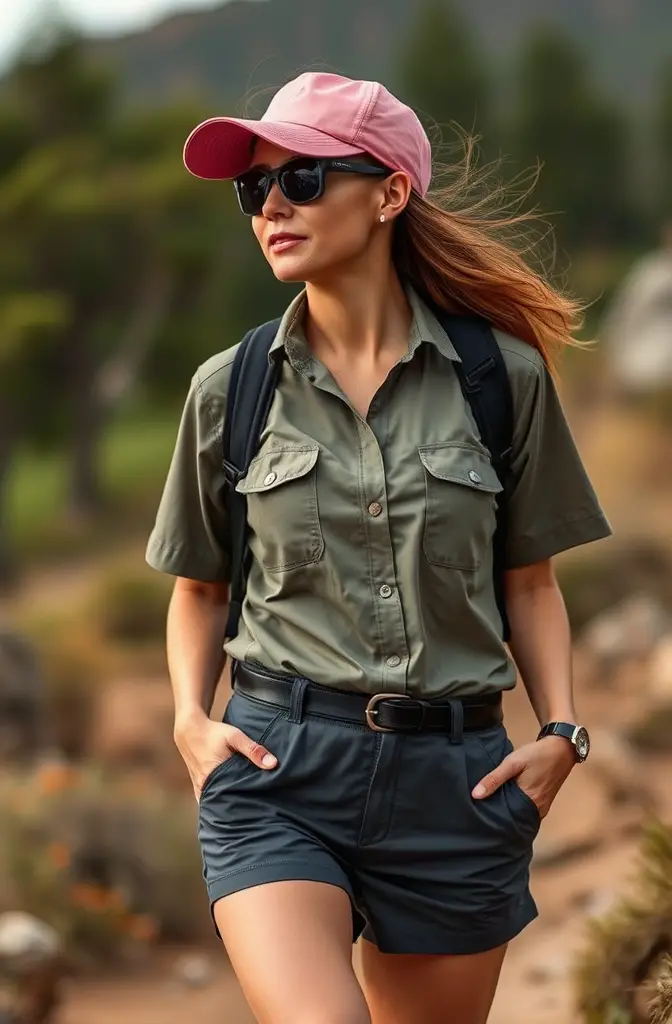
Tropical mission locations present unique challenges, where the combination of heat, humidity, and sun exposure can quickly become overwhelming.
Lightweight, loose-fitting cotton and linen become your best allies in high temperatures, allowing air circulation while still providing appropriate coverage.
Pack clothing in light colors that reflect rather than absorb the sun’s heat, but avoid white which shows dirt easily in work environments.
Look for shirts with built-in UPF (Ultraviolet Protection Factor) for added sun protection during long days outdoors.
Consider convertible clothing that adapts to changing conditions, like pants with zip-off legs or shirts with roll-up sleeves secured by tabs.
Technical fabrics designed for hiking or outdoor sports wick moisture away from your skin, helping you stay cooler than traditional cotton.
Pack twice as many tops as you think you’ll need – in tropical humidity, you may change shirts multiple times daily.
A wide-brimmed hat is non-negotiable for sun protection, preferably one that covers your neck as well as your face.
Avoid synthetic fabrics that don’t breathe well, as they can trap heat and moisture against your skin, causing discomfort and potential rashes.
Consider moisture-wicking underwear designed for active wear, which can dramatically improve comfort in humid conditions.
Remember that in many tropical locations, modest dress is still expected despite the heat – loose linen pants can actually be cooler than shorts.
Pack a lightweight sleep set specifically for hot nights, as accommodations may not have air conditioning.
Bring a small cooling towel that can be wet and placed on your neck during particularly hot workdays.
Sun Protection Beyond Just Sunscreen


Proper sun protection through clothing choices is as important as sunscreen for preventing painful burns that can sideline you from service.
A lightweight, long-sleeved sun shirt with UPF 50+ protection allows you to reduce your reliance on constantly reapplying sunscreen.
Invest in a quality wide-brimmed hat with a minimum 3-inch brim all around – not just a baseball cap that leaves ears and neck exposed.
Consider sun sleeves or sun gloves if your work involves long periods outdoors, especially if you burn easily.
Look for pants and shirts specifically designed for sun protection, which are now widely available from outdoor retailers.
Pack a buff or neck gaiter that can be pulled up to protect your face and neck when sun exposure is intense.
Remember that sun protection is especially crucial between 10 AM and 4 PM when UV rays are strongest.
Choose sunglasses with actual UV protection, not just dark lenses, to prevent eye damage during outdoor service.
Consider a lightweight sun hoodie, which provides head and neck coverage without the bulk of carrying a separate hat.
Pack sun-protective lip balm as lips can burn severely and painfully impact your ability to communicate effectively.
Be aware that reflection from water, sand, or even light-colored concrete can intensify sun exposure beyond what you might expect.
Remember that certain medications can increase sun sensitivity, so check with your doctor before traveling.
Even on cloudy days, harmful UV rays penetrate cloud cover, making sun protection necessary regardless of perceived brightness.
Evening and Community Meeting Attire

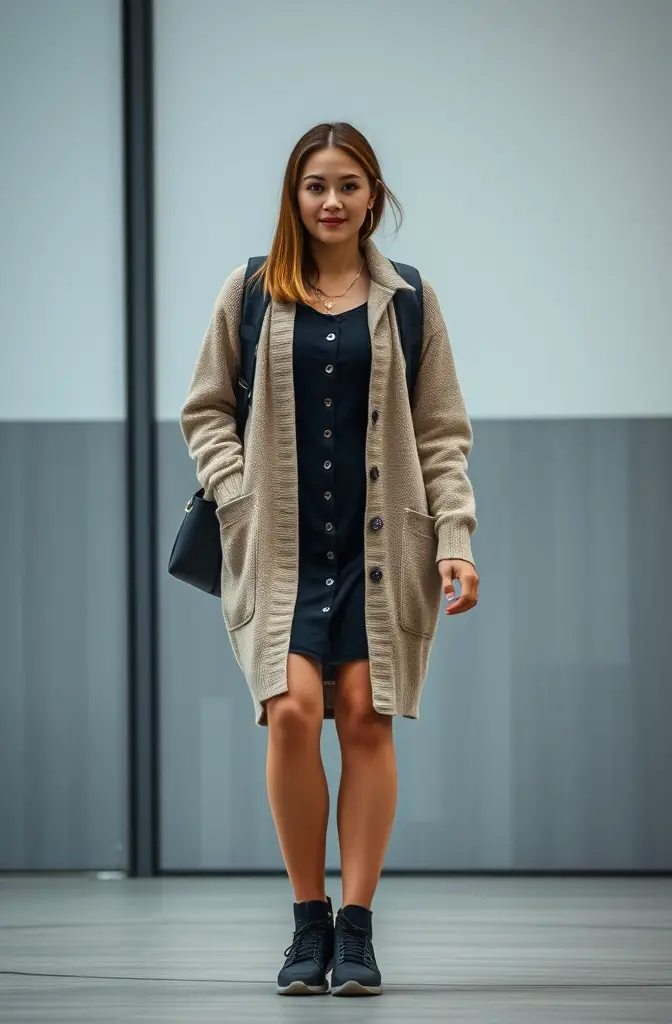
Mission trips often include evening gatherings, community meetings, or church services requiring slightly more polished attire.
Pack one versatile “dress-up” outfit that can work for multiple evening functions without taking much suitcase space.
For women, a simple, knee-length dress or skirt with a modest top works across most cultural contexts for more formal occasions.
A lightweight cardigan or jacket can instantly elevate a basic outfit while providing warmth for air-conditioned meeting rooms or cool evenings.
Choose wrinkle-resistant fabrics for these items since you likely won’t have access to an iron during your trip.
Remember that “dress clothes” on a mission trip should still be practical and comfortable – you’re not attending a cocktail party.
Dark colors show less dirt and can be worn multiple times between washing if needed.
Consider bringing one set of accessories that can transform a basic outfit – a scarf, simple jewelry, or a tie can make a difference.
Comfortable yet neat shoes complete these outfits – women should avoid high heels in favor of supportive flats or low wedges.
Many cultures place high value on dressing respectfully for church or community gatherings, so this is not an area to skimp on.
Observe how local leaders dress for these occasions and aim to match their level of formality as closely as possible.
Remember that presenting yourself neatly for community meetings demonstrates respect for local partners and their customs.
Medical Mission Specific Requirements


Medical mission volunteers face unique clothing requirements that balance professionalism with practicality in challenging environments.
Many medical missions require scrubs, which provide a recognizable, professional appearance while being practical for the physical demands of healthcare.
Pack at least three sets of scrubs in subdued colors that won’t show stains easily – navy, gray, or green are good options.
Remember that some locations may expect white lab coats for physicians, so check requirements before traveling.
Comfortable, closed-toe shoes with good support are essential as you’ll be standing for long periods on potentially uneven surfaces.
Consider compression socks if you’re prone to foot or leg fatigue during long standing sessions.
Bring a lightweight cardigan or jacket that can be worn over scrubs in air-conditioned facilities or cool evenings.
For identification purposes, pack a lanyard or badge holder that can display your credentials clearly.
Include a small cross-body bag or fanny pack to carry essential items like hand sanitizer, pens, and small medical tools.
Remember that some conservative communities may require women to wear scrub pants under scrub dresses for modesty.
Pack a lightweight cap or head covering if you’ll be working in surgical settings, even makeshift ones.
Consider bringing your own stethoscope, pen light, and basic diagnostic tools as they may be in short supply.
Remember that medical volunteers often serve as representatives of healthcare, so maintaining a neat, clean appearance helps build trust with patients.
Teaching and Children’s Ministry Appropriate Wear


Volunteers working with children require clothing that allows for active engagement while maintaining appropriate modesty and professionalism.
Pack clothes that you can move freely in – you’ll likely be sitting on floors, playing active games, and getting messy with art supplies.
Choose bright, cheerful colors that engage children’s attention but avoid overwhelming patterns that might be distracting.
Consider t-shirts with positive, kid-friendly messages or images that can serve as conversation starters with the children you serve.
Pants or longer shorts with stretch are ideal for the physical demands of working with energetic kids.
Remember that in many cultures, teachers are highly respected, so dress slightly more formally than you might for other volunteer roles.
Pockets are invaluable for carrying small items like stickers, bandages, or activity supplies throughout the day.
Avoid dangling jewelry, scarves, or accessories that curious children might pull or that could be hazardous during active play.
Layering is essential as classroom temperatures can vary dramatically, especially in facilities without climate control.
Pack clothes that can withstand frequent washing, as working with children often leads to unexpected messes.
Consider bringing a special “story time” prop like a puppet or hat that helps engage children despite language barriers.
Comfortable shoes are crucial – you’ll be on your feet, often on concrete floors without padding for much of the day.
Remember that your appearance sets an example for the children you’re working with, so maintaining neat, clean clothing shows respect.
Construction and Building Project Gear


Construction-focused mission trips demand specialized clothing that prioritizes safety and durability above all else.
Heavy-duty work pants with reinforced knees will protect your legs from scrapes, splinters, and potential hazards on construction sites.
Bring shirts made of thick cotton that can withstand rough conditions while still allowing airflow in hot working environments.
Pack a dedicated pair of closed-toe work boots with good ankle support and slip-resistant soles – safety should never be compromised.
Consider bringing your own work gloves as local supplies may be limited or unavailable.
A bandana or buff serves multiple purposes – from keeping sweat out of your eyes to covering your nose and mouth in dusty conditions.
Pack a lightweight long-sleeve option for sun protection during extended outdoor work, even in hot climates.
Bring a hat with a secure fit that won’t blow off easily while working at heights or in windy conditions.
Consider knee pads if your project will involve significant floor-level work like tile installation or flooring.
Remember that clothes will get extremely dirty, possibly stained with paint, cement, or other building materials, so don’t bring anything you value.
Pack a belt or suspenders to keep pants secure during active construction work – constantly hitching up falling pants is both annoying and potentially dangerous.
Bring several pairs of thick work socks to prevent blisters when wearing heavy boots all day.
Consider bringing a lightweight safety vest if your project involves roadside work or areas with vehicle traffic.
Rainy Season and Unpredictable Weather Solutions


Many mission trips occur during challenging weather seasons, requiring strategic packing to stay effective regardless of conditions.
A packable rain jacket with hood is perhaps the most essential item, ideally one that’s breathable enough to wear in humid conditions.
Quick-dry pants or convertible options allow you to continue working effectively even after a sudden downpour.
Waterproof footwear becomes invaluable during rainy seasons – consider trail runners with Gore-Tex or similar waterproof technology.
Pack a small microfiber towel that can be used to quickly dry off equipment, wipe down seating areas, or dry your hands throughout the day.
Consider bringing waterproof phone and document pouches to protect essential items during unexpected storms.
Remember that in tropical climates, rain often doesn’t reduce temperatures, so waterproof gear needs to be breathable to prevent overheating.
Pack multiple pairs of quick-dry socks, as foot health becomes even more crucial when working in wet conditions.
A waterproof hat with brim extends all-around offers better protection than a hood in driving rain conditions.
Consider zip-top plastic bags in various sizes for protecting electronics, papers, and other items vulnerable to moisture.
Remember that mud becomes a major factor during rainy seasons, so footwear with aggressive tread prevents dangerous slips.
Pack a lightweight change of clothes in a waterproof bag within your day pack for complete drenching scenarios.
Consider bringing a poncho in addition to a rain jacket – ponchos provide more coverage for both you and a backpack in heavy downpours.
Travel Day Comfort Without Sacrificing Style

The journey to and from your mission location often involves long flights, bus rides, or train trips requiring specific clothing considerations.
Choose pants with slight stretch that won’t restrict movement during long periods of sitting in cramped transportation.
Layer with a comfortable t-shirt under a light zip-up hoodie or cardigan that can be easily adjusted for changing cabin temperatures.
Wear your bulkiest shoes (like hiking boots) during travel to save valuable luggage space, even if they’re not your first choice for comfort.
Compression socks can prevent swelling and discomfort during long flights, especially important if you’ll begin active work soon after arrival.
Opt for dark colors that won’t show dirt or spills accumulated during long travel days with limited access to cleaning.
Consider pants with secure zippered pockets for important documents and small valuables during transit.
Avoid belts or complicated accessories that might trigger extra screening at security checkpoints.
Pack a small comfort kit in your personal item with essentials like lip balm, hand sanitizer, and a clean face wipe for refreshing during long journeys.
Choose a light scarf or shawl that serves as a blanket, pillow, or extra layer during chilly overnight flights.
Remember that you’ll be carrying your luggage through airports, train stations, and to your final destination, so wear something that allows free movement.
Consider an outfit that transitions well from travel to your first activity upon arrival, as you may not have immediate access to your luggage.
Packing Light Without Sacrificing Preparedness


The art of efficient packing transforms your mission experience by eliminating the burden of excessive luggage while ensuring you have what you need.
Commit to bringing only items that serve multiple purposes – like pants that convert to shorts or a sarong that works as a skirt, scarf, or light blanket.
Plan to wash clothes during your trip, allowing you to pack for about one week regardless of your trip length.
Choose a cohesive color palette where every top works with every bottom, maximizing outfit combinations from minimal pieces.
Roll clothes rather than folding to save space and reduce wrinkles in your luggage.
Use packing cubes to organize and compress clothing, making it easier to find items without unpacking your entire bag.
Consider the “rule of three” for most categories: three bottoms, three tops, three sets of undergarments that can be washed and rotated.
Wear your bulkiest items during travel days to free up valuable suitcase space.
Evaluate every item with the question: “What would happen if I didn’t bring this?” – if the answer isn’t serious, leave it behind.
Remember that most toiletries can be purchased at your destination, often in sizes better suited for short trips.
Choose versatile shoes – ideally no more than three pairs total: sturdy closed shoes, supportive sandals, and possibly flip-flops for shower use.
Pack lightweight, fast-drying microfiber towels instead of traditional cotton ones that take up significant space and dry slowly.
Remember that your effectiveness as a volunteer improves when you’re not burdened by managing excessive possessions during your trip.
